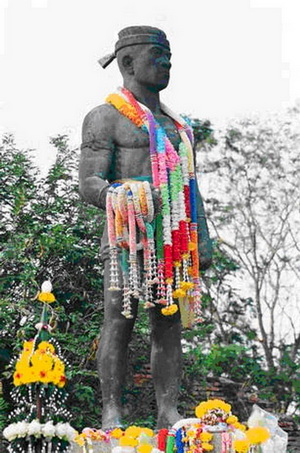
The Legend of Nai Khanom Tom
The ancient capital of Ayutthaya is home to the annual World Thai Martial Arts Festival and Wai Khru Muay Thai Ceremony. For individuals trained in the ancient Thai art of boxing or ‘Muay Thai’, the annual Wai Khru Muay Thai Ceremony held during the annual Thai Martial Arts Festival is the most important date on their calendar. Muay Thai boxers from around the world return to Ayutthaya to pay respect to their teachers, and to pay homage to the legendary Muay Thai folk hero, Nai Khanom Tom.
Formally known as Phra Nakhon Si Ayutthaya, the ancient city of Ayutthaya, was founded in 1350 by King U-Thong and remained the capital city of the Kingdom of Siam for 417 years, from 1350 to 1767. During this time, 33 kings of various Siamese dynasties have reigned in Ayutthaya, each contributing to the Kingdom's many cultural treasures. At its height of glory, Ayutthaya was one of Asia's most prosperous cities with a proliferation of magnificent temples, palaces and pavilions signifying its wealth and prosperity. This impressive heritage has become the bedrock of Thai society and has shaped the Thai way of life as it exists today. With a culture and civilization so outstanding and timeless, UNESCO declared the Ayutthaya Historical Park, a cultural World Heritage Site on 13 December 1991.
The ancient origins of Muay Thai or Thai boxing can be traced back to Muay Boran or “ancient boxing”, a form of unarmed combat used by Siamese soldiers in conjunction with an ancient weapon called Krabee Krabong.
Muay Thai is Thailand’s national sport and Ayutthaya, the home of its legendary hero, Nai Khanom Tom, is the stronghold of Muay Thai.